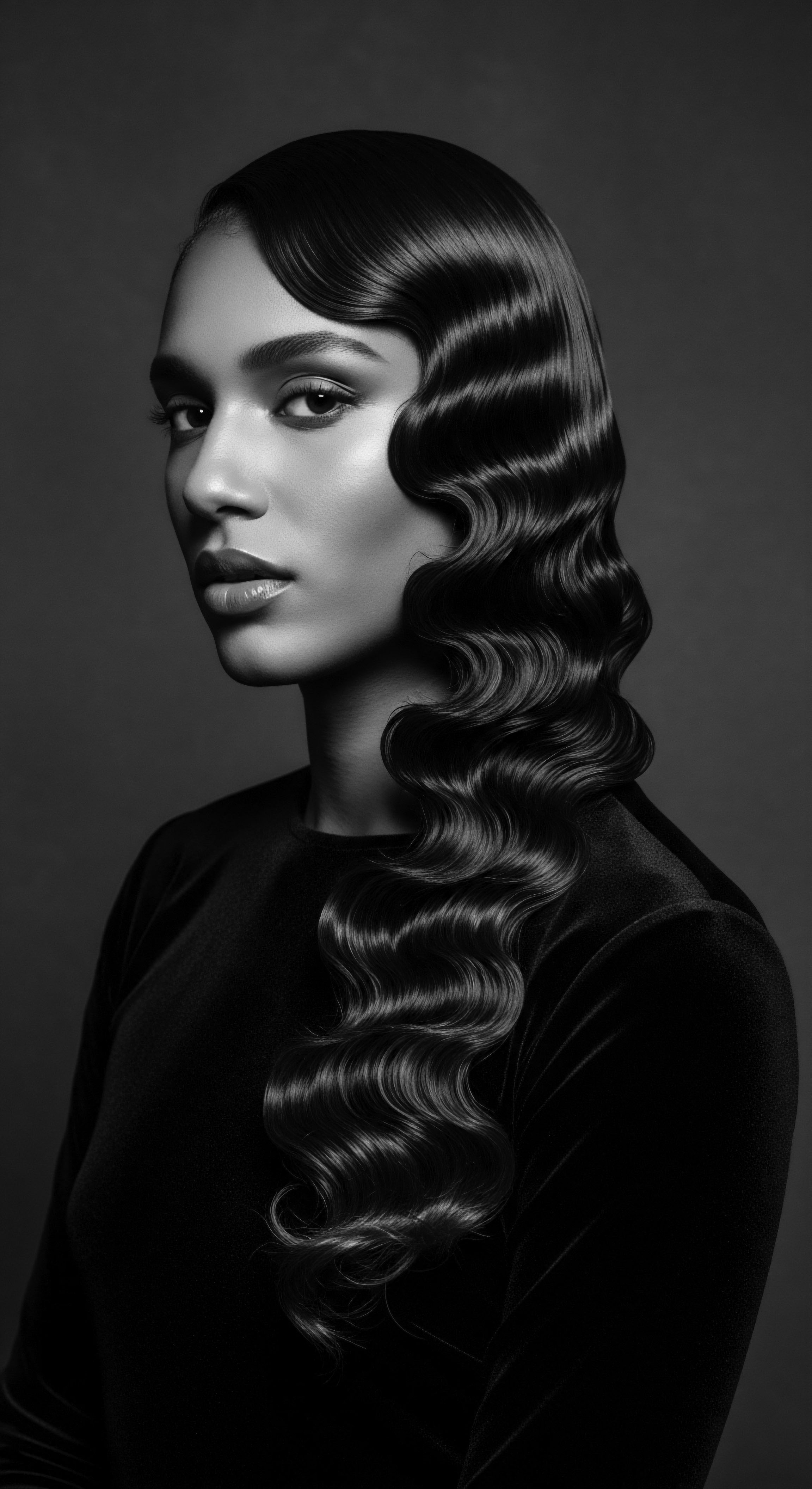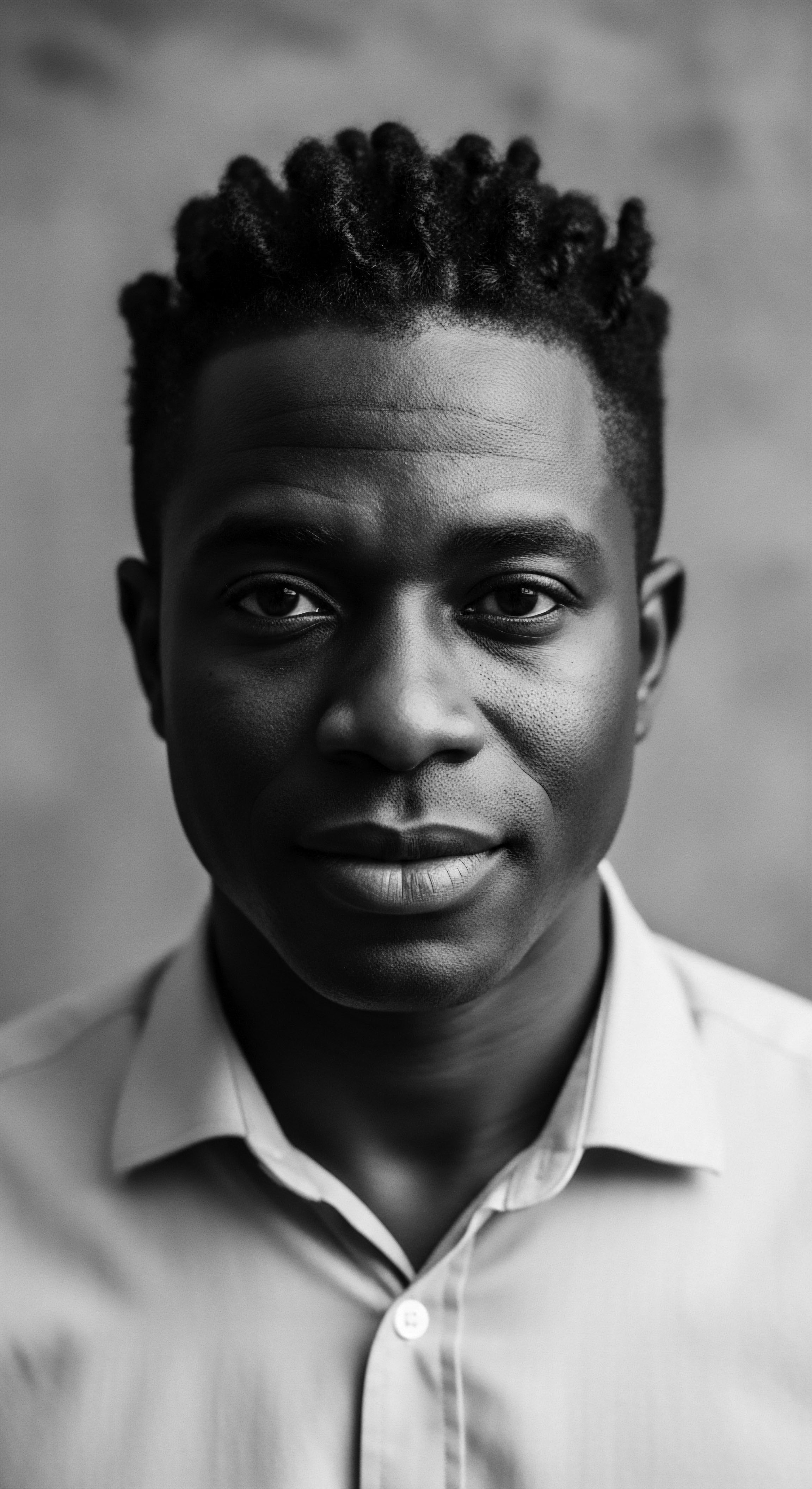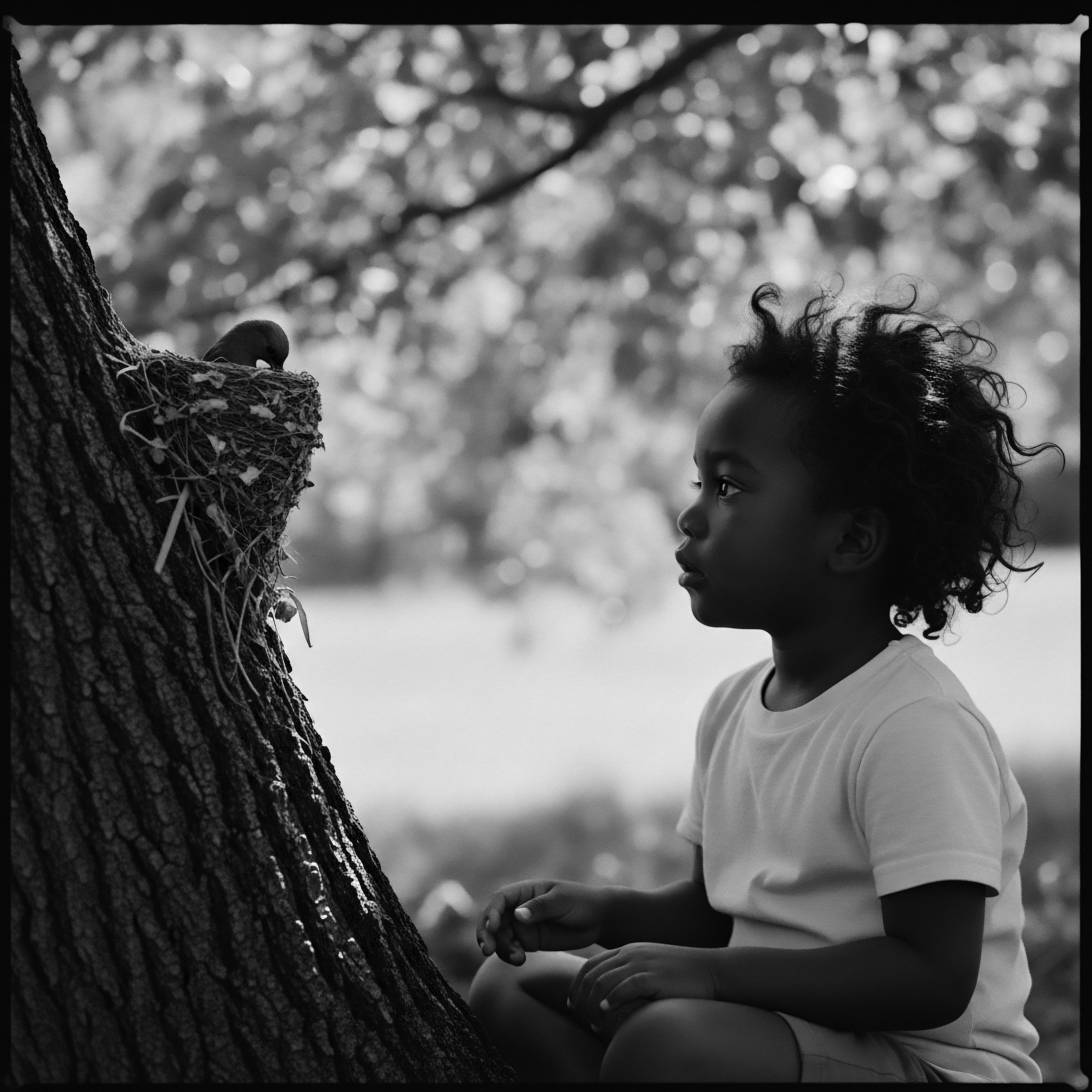
Roots
Your hair, in its glorious spirals and waves, is a testament. It bears witness to journeys across continents, to hands that have tilled soil, and to spirits that have resisted and rejoiced. Each strand holds a whisper of memory, a chronicle of ingenuity passed through generations.
We speak of ancestral oils, these elixirs of old, and their profound place in the very essence of textured hair identity. This is a study of how the substances drawn from the earth became intertwined with who we are, a living heritage flowing from scalp to tip.

What Is the Ancestral Basis of Hair Structure Understanding?
Before modern microscopy, before chemical compositions were charted, ancient communities understood their hair with a wisdom born of daily observance and generational learning. They recognized distinct hair structures not through molecular bonds, but through touch, through observation of how certain preparations responded to different patterns. They knew hair could be tightly coiled, softly wavy, or a mixture of textures, each with its unique thirsty spirit and inherent strength. This knowing guided their choice of botanical resources.
For communities across Africa, the Caribbean, and among indigenous peoples of the Americas, hair was never merely an aesthetic detail; it was a visible marker of clan, status, age, and spiritual alignment. The care given to it reflected a reverence for this aspect of being, a ritual upholding communal ties and personal power.
Scientific insights now affirm much of this ancient perception. Textured hair, particularly that with tighter curls and coils, exhibits an elliptical or flat cross-section, contributing to its tendency for dryness and proneness to breakage compared to straighter hair types. The helical shape of the hair shaft means that natural oils produced by the scalp struggle to descend along the entire length of the strand. This inherent characteristic, a biological design, necessitated practices that replenished moisture and offered protection.
Ancestral oils stepped into this fundamental need, serving as guardians against environmental elements and as agents of fortification. Their consistent application was a response to the hair’s very architecture, a partnership between human practice and natural form.
Ancestral oils tell a story of resilience and ingenuity, a quiet record of identity.

Traditional Classifications of Textured Hair
Traditional societies possessed their own nuanced ways of categorizing hair, often tied to practical care and social meanings. These were not rigid systems based on numbers and letters, but rather fluid understandings shaped by lived experience and the efficacy of traditional preparations.
- Hair by Tribe or Clan ❉ In many African societies, particular hair textures or styles were associated with specific ethnic groups. The care routines, including the oils used, were part of this distinct tribal expression.
- Hair by Age or Status ❉ The hair of a child, a maiden, a married woman, or an elder might be recognized differently, requiring varied forms of care and oiling rituals that communicated stages of life within the community.
- Hair by Response to Environment ❉ Hair that felt dry in arid climates, or hair that retained moisture well in humid zones, informed the choice of local oils. Knowledge of regional botanicals guided these assessments.
These methods of understanding hair were deeply integrated into daily life, transmitted through oral traditions and hands-on teaching. They formed an ancestral hair codex, a body of communal wisdom about the living material that crowned their heads. The use of specific oils became a dialect of hair care, spoken by the hands and through the shared experience of grooming.
| Aspect Hair Needs |
| Ancestral Understanding Identified through touch and visual cues; 'thirst' and brittleness were key. |
| Modern Scientific View Recognized by cuticle lift, protein loss, and moisture content. |
| Aspect Oil Application |
| Ancestral Understanding Driven by observation of dryness and breakage, for protective and beautifying purposes. |
| Modern Scientific View Aimed at sealing the cuticle, reducing friction, and supplementing natural sebum. |
| Aspect Hair as Identity |
| Ancestral Understanding A central part of social, spiritual, and clan identity, shaping adornment. |
| Modern Scientific View Acknowledged as a powerful component of self-presentation and cultural heritage. |
| Aspect The continuity of understanding hair's requirements across time speaks to an intuitive, enduring wisdom. |
The core lexicon of textured hair, for ancestral communities, included terms that described curl patterns, hair states, and styling methods. These were often tied to nature – the coils of a vine, the ripple of water, the strength of specific fibers. The language itself was rooted in observation and the qualities of the hair itself. This intimate vocabulary, shaped by centuries of communal care, laid the groundwork for contemporary discussions of texture, even as modern science provided its own precise terminology.

Ritual
The application of ancestral oils transcends simple cosmetic practice; it is a ritual, a connection across generations, a spoken prayer without words. The act itself carries cultural weight, a deliberate engagement with heritage that transforms grooming into an act of profound self-care and communal bonding. These traditions shaped the very landscape of textured hair styling, influencing techniques, tools, and personal expressions through transformation.

How Have Ancestral Oils Shaped Protective Styles?
Protective styles, those masterful creations that tuck away hair ends from daily friction and environmental elements, have deep ancestral roots. From elaborate braided crowns to intricate cornrow patterns, these styles were not merely decorative. They served practical purposes, preserving length and health in challenging climates, while also acting as powerful visual statements of identity. Ancestral oils were indispensable to these styles.
Before braiding, twisting, or coiling, hair was often coated with oils and rich butters extracted from local flora. This preparation softened the strands, making them more pliable, preventing breakage during the styling process, and sealing in moisture for the duration of the style. The oil acted as a foundation, a protective sheath.
Consider the enduring legacy of Shea Butter, derived from the nuts of the African shea tree. For centuries, communities across West Africa have relied upon this nutrient-dense butter to condition and protect their hair. It became a core element in the preparation for styles such as Fulani braids or Bantu knots, lending the hair a healthy sheen and preventing dryness.
This practice, passed down mother to daughter, was fundamental to maintaining hair health while wearing protective styles for extended periods. The choice of oil was not random; it was informed by generations of accumulated wisdom about how these natural resources interacted with particular hair textures under specific climatic conditions.
The careful anointing of hair with oils before styling is a silent language of care, stretching back through time.
The tools used were often extensions of the natural world ❉ fingers, wooden combs carved with symbolic patterns, or even sharpened sticks for parting. These tools, coupled with the slipperiness provided by the oils, allowed for the meticulous creation of styles that could endure for weeks, safeguarding the hair underneath. The ritual itself was often communal, with women gathering to braid one another’s hair, sharing stories and wisdom, the very act reinforcing social bonds alongside hair health.

What Are the Ancestral Foundations of Hair Adornment?
Hair adornment, for many ancestral communities, was a sophisticated art form, deeply imbued with meaning. Oils not only prepared the hair for adornment but often served as a base to which other elements adhered, or as a finishing application to enhance the beauty of the completed work. The sheen imparted by oils amplified the visual impact of beads, cowrie shells, precious metals, or even dried flowers and herbs.
The Himba people of Namibia, for instance, apply a mixture known as Otjize to their hair and skin, a striking blend of ground ochre, aromatic resin, and animal fat. This paste gives their hair a distinct reddish-orange hue, symbolizing the earth and the vitality of life. The oil base within otjize allows the ochre to adhere, protecting their hair from the harsh desert sun while serving as a powerful cultural marker. This tradition speaks to a deep connection between the natural world, personal adornment, and communal identity.
The legacy of these ancient practices continues to inform contemporary textured hair styling. Modern natural styling techniques, from wash-and-gos that define curls to twists and coils that lend definition, often rely on oils for moisture retention and a healthy finish. The understanding that oils enhance hair’s natural beauty and pliability remains a constant, a heritage principle that bridges the ancient and the now.
| Oil/Butter Shea Butter |
| Traditional Application in Styling Lubricant for braiding, protective coating for styles, a sheen agent. |
| Modern Resonance Moisture sealant, styling cream base, pre-poo for textured hair. |
| Oil/Butter Castor Oil |
| Traditional Application in Styling Growth stimulant for scalp massages, setting agent for intricate patterns. |
| Modern Resonance Scalp treatment for growth, edge control, thick hair sealant. |
| Oil/Butter Coconut Oil |
| Traditional Application in Styling Deep conditioning, enhancing shine, base for herbal infusions. |
| Modern Resonance Pre-shampoo treatment, daily moisture, shine serum. |
| Oil/Butter The enduring utility of ancestral oils in hair styling is a testament to their inherent qualities and the wisdom of their historical use. |
The artistry of textured hair has always been a conversation between nature’s gifts and human creativity. Oils, extracted from seeds, nuts, and plants, became the silent partners in this dialogue, allowing hair to be molded, protected, and celebrated. They served not just as conditioners but as a medium for cultural expression, facilitating styles that spoke volumes about identity and belonging.

Relay
The wisdom concerning ancestral oils, once passed from hand to hand within close-knit communities, now relays across time, informing modern wellness and problem-solving for textured hair. This is where holistic care finds its deepest roots, drawing directly from the ancestral appreciation of hair not as a separate entity, but as an integral aspect of complete well-being. The traditional principles of nurture and balance echo in contemporary regimens.

What Is the Enduring Significance of Nighttime Hair Rituals?
The transition from day to night held unique importance in ancestral hair care, a time for rest and restoration, not just for the body, but for the hair. Before the advent of modern sleep caps or satin pillowcases, communities utilized various natural coverings and practices to safeguard their intricate styles and treated hair from tangles and environmental aggressors during sleep. This pre-sleep preparation, often involving a final application of oils, was a quiet, consistent act of self-preservation and care. It recognized the hair’s vulnerability during periods of repose and sought to maintain its condition for the coming day.
For instance, the historical use of bonnets and head wraps among women of African descent, particularly in the diaspora, extends beyond mere fashion or modesty. These coverings, often crafted from soft, breathable natural fibers, served as practical tools for preserving hairstyles and retaining moisture from applied oils. This practice, deeply woven into the fabric of daily life, offered protection against friction that could lead to breakage, a common concern for the delicate nature of textured strands. It reflects an ancestral understanding of preventive care, where diligent action safeguards what is precious.
This commitment to nighttime protection is also visible in the evolution of Jamaican Black Castor Oil (JBCO) within Afro-Caribbean communities. Originating from Africa and carried to the Caribbean during the transatlantic slave trade between 1740 and 1810, this oil became a cornerstone of hair and skin care. Enslaved Africans, stripped of many aspects of their heritage, adapted and preserved this knowledge, using JBCO for medicinal purposes and for the unique needs of their hair. Its preparation, involving roasting and boiling castor beans, yields a thick, dark oil, rich in omega fatty acids.
The consistent application of JBCO as a nightly scalp massage was, and remains, a practice linked to promoting hair growth and strengthening strands, particularly for those with tightly coiled hair more prone to dryness. This enduring use underscores the resourcefulness of African descendants, who, under immensely challenging circumstances, sustained traditional practices that became central to their cultural identity. (PushBlack, 2023).
From ancient applications to modern adaptations, ancestral oils serve as a continuous thread connecting past wisdom to present hair vitality.

How Do Traditional Ingredients Inform Contemporary Hair Wellness?
The ancestral pharmacy of ingredients, primarily oils and butters, provides a rich foundation for contemporary textured hair wellness. These substances were not chosen arbitrarily; their properties were understood through centuries of empirical observation. The knowledge of their unique benefits for cleansing, moisturizing, and fortifying hair was a living science, transmitted through daily communal practice.
Consider the following traditional ingredients and their historical applications:
- Coconut Oil ❉ Revered across South Asia, Africa, and parts of the Caribbean for its deep conditioning abilities. Ancient texts and oral traditions speak of its regular application for scalp health and strand strength. Modern science affirms its unique molecular structure allows it to penetrate the hair shaft, reducing protein loss.
- Moringa Oil ❉ Utilized in parts of Africa and Asia, derived from the “miracle tree.” Historically applied for its purported ability to nourish the scalp and promote hair vitality. Its nutritional profile, rich in antioxidants and vitamins, supports its historical reputation.
- Baobab Oil ❉ Extracted from the fruit of the “tree of life” in Africa. Historically valued for its moisturizing and protective qualities in arid climates, helping to maintain hair suppleness. Its composition of fatty acids and vitamins supports its conditioning effects.
- Argan Oil ❉ A cornerstone of Berber beauty practices in Morocco for centuries. Known as “liquid gold,” it was used to condition hair and protect it from the elements. Today, its high content of fatty acids and Vitamin E makes it a staple for shine and repair.
These oils were often combined with herbs, clays, and other natural elements to create comprehensive hair treatments. The wisdom was holistic; hair care was intertwined with diet, environment, and spiritual well-being. Today, this ancestral wisdom guides the crafting of formulas that respond to the unique needs of textured hair, seeking solutions that honor both scientific understanding and inherited practices.
The challenge of dryness, a persistent concern for textured hair due to its coil pattern, finds an age-old remedy in the consistent, mindful application of these conditioning oils. Issues like scalp irritation or brittleness were approached with specific botanical infusions, drawing from a vast, inherited library of nature’s remedies.

Reflection
To consider ancestral oils and their deep connection to textured hair identity is to step into a vast, living archive of human spirit and resilience. Each drop of oil, from the shea butter warmed in the palm of a West African elder to the Jamaican Black Castor Oil massaged into the scalp of a diaspora child, carries echoes of practices that sustained a people. This is a story of more than biology or beauty; it chronicles survival, cultural preservation, and a profound reverence for one’s physical self as an extension of heritage. The care given to hair, especially textured hair, becomes a testament to the wisdom that persisted despite attempts to diminish it, a quiet strength that found expression through humble botanicals.
The journey from elemental biology to an assertion of future identity for textured hair is guided by these ancestral echoes. It reminds us that our hair is a vibrant, living library, its coils and kinks holding knowledge passed down through the very act of care. The tactile connection to these oils, the scents, the shared moments of grooming across generations, all serve to strengthen a sense of belonging, a rootedness that defies displacement.
This is not simply about what oils do for hair; it is about what the practice of using them does for the soul—a continuous, unspoken declaration of who we are and from where we come. Our textured hair, nurtured by the wisdom of ages, stands as an unbound helix, reaching skyward while remaining deeply tethered to the earth from which its ancestral care springs.

References
- Ambuja Solvex. (2022). Jamaican Black Castor Oil ❉ Surprising Benefits & Facts.
- Colomas, J. (2023). Unlock Ancient Hair Care Secrets ❉ Discover Global Rituals for Lustrous Locks.
- PushBlack. (2023). Why Jamaican Black Castor Oil Is Rich in Black History.
- Bebrų Kosmetika. (2024). The Power of Hair in African Folklore ❉ Rituals and Traditions.
- AFRICAN JOURNAL OF APPLIED RESEARCH. (2024). An Exploration of The Cultural Symbolism of Some Indigenous Cosmetic Hair Variants in The Dormaa Traditional Area, Ghana.
- EriCare. (n.d.). Jamaican Black Castor Oil Vs Indian Cold-Pressed Castor Oil.
- Lira Clinical. (n.d.). Modern Beauty from the Ancient Egyptian Empire.
- Bellevida Beauty. (2023). Hair Care Rituals from Around the World.
- Substack. (2025). Ancestral Hair Rituals to Nourish Your Hair and Soul.
- Etre Vous. (n.d.). Here’s why hair oiling is the ancient ritual worth adopting.
